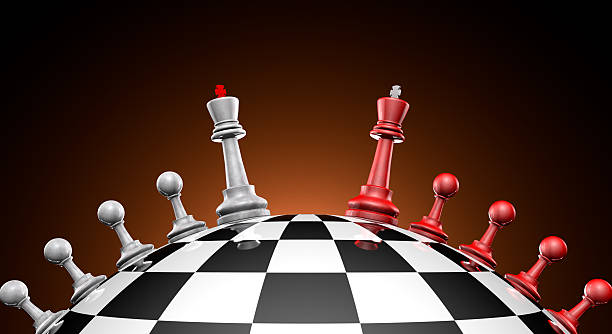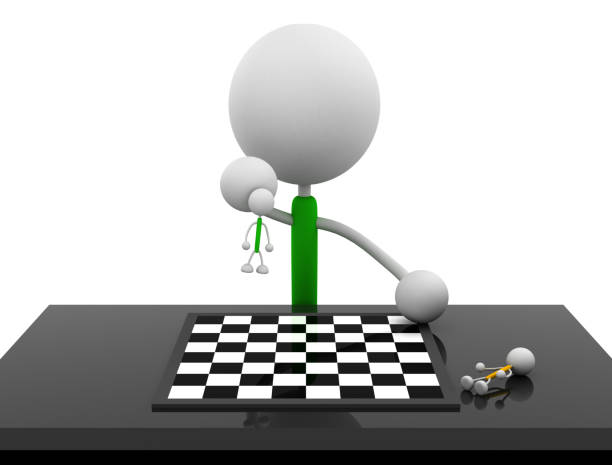what does each piece do in chess?
Contents
- 1 what does each piece do in chess?
- 2 The Basics of Chess Pieces
- 3 The King: The Sovereign Ruler
- 4 The Queen: The Mighty Force
- 5 The Rook: The Towering Sentinel
- 6 The Bishop: The Diagonal Powerhouse
- 7 The Knight: The Unpredictable Warrior
- 8 The Pawn: The Frontline Infantry
- 9 Strategic Considerations and Piece Coordination
- 10 Conclusion
Chess, often hailed as the “Game of Kings,” is a captivating journey through strategy and intellect. As we embark on this exploration of “What does each piece do in chess,” we will unravel the mysteries of the king, queen, rook, bishop, knight, and pawn. So, let’s dive into the intricacies of the chessboard and discover the unique roles of these regal pieces.
The Basics of Chess Pieces
In the realm of chess, understanding the cast of characters is crucial. A standard chess set consists of 16 pieces for each player, including the king, queen, rooks, bishops, knights, and pawns. These pieces, set against the backdrop of a 64-square battlefield, bring the game to life as they vie for supremacy and strategic dominance.

The King: The Sovereign Ruler
Imagine the king as the wise and cautious monarch, presiding over the kingdom with both authority and vulnerability. The king’s movements are deliberate, allowing it to advance one square in any direction. However, the true significance lies in the perilous dance of check and checkmate. For instance, if an opponent’s piece threatens the king with capture (check), the player must make a move to escape or block the threat. If there’s no escape, it’s checkmate, and the game concludes.
Example: In a game, your opponent cleverly positions their queen to threaten your king. You must strategize and make a move that either escapes the threat or blocks the queen’s attack.

The Queen: The Mighty Force
Meet the queen, the game’s powerhouse and a force to be reckoned with. This majestic piece commands attention with its ability to traverse both diagonals and straight lines, covering vast swaths of the board. In a single move, the queen can influence multiple fronts, making it an essential player in both offensive and defensive maneuvers.
Example: Your queen gracefully glides diagonally across the board, putting pressure on your opponent’s pawn and simultaneously eyeing their king. This versatility allows you to control critical squares and dictate the pace of the game.
The Rook: The Towering Sentinel
Picture the rook as the towering sentinel, strategically positioned to control ranks and files. The rook’s strength lies in its linear movements, traversing the board with authority. By seizing open files and dominating key avenues, the rook becomes a formidable presence, especially in the endgame, where its maneuverability is a game-changer.

Example: Your rook maneuvers to an open file, exerting control over the center of the board. This position becomes a linchpin for launching coordinated attacks or fortifying your defenses.
The Bishop: The Diagonal Powerhouse
Visualize the bishop as the diagonal powerhouse, gracefully navigating the chessboard’s intricate diagonals. With nimble movements, bishops control territories that might seem distant at first glance. Whether light-squared or dark-squared, bishops serve as the architects of strategic offensives, orchestrating attacks with finesse and grace.
Example: Your dark-squared bishop maneuvers diagonally, unleashing an unexpected assault on your opponent’s rook. This dynamic movement catches them off guard, showcasing the bishop’s prowess.
The Knight: The Unpredictable Warrior
Envision the knight as the unpredictable warrior, traversing the board with its distinctive L-shaped movement. Knights excel in close-quarters combat, leaping over obstacles and confounding opponents. Their ability to threaten multiple pieces simultaneously makes them invaluable assets in any engagement, offering opportunities for strategic positioning and surprise attacks.
Example: Your knight jumps over a cluster of pieces, landing in a position to deliver a fork, simultaneously attacking the opponent’s queen and rook. This unexpected maneuver puts your adversary on the defensive.

The Pawn: The Frontline Infantry
Consider the pawn as the frontline infantry, making steadfast strides in the grand chess war. Though modest in stature, pawns hold immense potential, shaping the course of battle through strategic advancement. Their forward march lays the groundwork for future offensives, as they vie for control of critical squares and avenues of attack.
- Forward Advancement: Pawns are tasked with advancing forward, occupying and controlling critical squares on the chessboard. Their incremental movement provides a foundation for launching attacks and controlling territory.
- Pawn Structure: Pawns contribute to the overall structure of the player’s position. A well-organized pawn structure provides stability and support for other pieces while also limiting the opponent’s mobility.
- Pawn Chains: Pawns can form chains, linking together to create a formidable barrier against the opponent’s advancement. These pawn chains bolster the player’s defenses and restrict the opponent’s options.
- Pawn Promotion: Pawns have the unique ability to promote to higher-value pieces upon reaching the opponent’s back rank. This transformation grants the player additional firepower and strategic flexibility.
- Pawn Sacrifices: In certain situations, sacrificing a pawn can be a tactical maneuver to gain a positional advantage or create opportunities for more powerful pieces to maneuver.
- Blocking and Controlling: Pawns can block opponent pieces, limiting their mobility and creating tactical obstacles. Additionally, they contribute to controlling the center and influencing the flow of the game.
- Defending Important Pieces: Pawns often serve as a shield, protecting more valuable pieces such as the king or queen from direct threats by opposing forces.
- Initiating Pawn Storms: In certain pawn structures, such as the fianchetto or pawn storm formations, pawns can lead aggressive offensives against the opponent’s position, disrupting their defenses and creating weaknesses.
Overall, while pawns may seem modest compared to the more powerful pieces on the chessboard, their contributions are invaluable in shaping the dynamics of the game and laying the groundwork for strategic success.
Strategic Considerations and Piece Coordination
As the chessboard evolves, understanding the interplay between different pieces becomes paramount. Piece coordination, pawn structure, and strategic positioning lay the foundation for victory. Consider the scenario where the queen orchestrates an attack with rooks, bishops control diagonals, knights deliver unexpected maneuvers, and pawns create a solid front – each piece contributing to a harmonious strategy.
Example: Your rook, queen, and bishops coordinate seamlessly, creating a checkmate scenario by controlling key squares and launching a coordinated assault. This intricate dance of pieces showcases the beauty of strategic coordination.
Conclusion
In the mesmerizing tapestry of chess, each piece is a unique contributor to the unfolding drama. From the regal king to the unassuming pawn, every piece holds a distinct role and purpose. As you navigate the chessboard, the question of “What does each piece do in chess?” takes on profound significance. Embrace the challenge, harness the power of your pieces, and may your moves be guided by strategy and cunning. In the game of chess, victory awaits those who understand the nuanced dance of each piece across the 64 squares.





